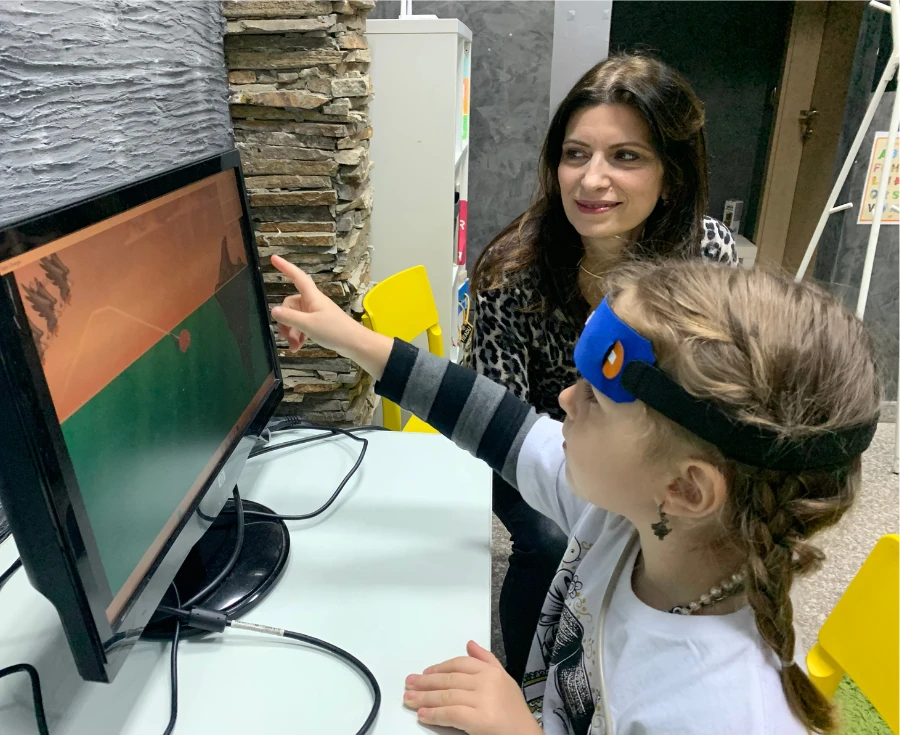
HEG (HemoEncephaloGraphy) is a type of neurofeedback training, which aims to increase blood levels and oxygenation, hence improving the metabolic capacity of brain regions. It focuses mainly on the prefrontal cortex, the area behind the forehead that serves as the brain's executive centre.
There are two HEG systems available: pIR (passive infrared), invented by Jeff Carmen, and nIR (near infrared), developed by Herschel Toomim. pIR detects infrared temperature variations on the forehead (higher infrared temperatures imply greater metabolic activity) and is mostly performed at Fpz (in the centre of the forehead). nIR detects the amount of red blood on the brain's surface, suggesting that it is oxygenated, and it also measures temperature variations.
I work with nIR system used in two or three different places of the client’s forеhead during a single training session.
HEG training can be quite beneficial for children and adults with very slow frontal activity or executive function problems. Often people with ADD and ADHD exhibit prefrontal slow wave activity. This is evident from the when QEEG brain maps and from MRI imaging. In some cases it is even seen that the prefrontal lobes of such clients are “disconnected” from the rest of the brain due to an excess of slow wave activity.
There is some evidence that HEG training every four days is the most benefitial. Most of the time, we combine HEG neurofeedback with EEG or with HRV biofeedback training. In general, the neurofeedback session starts with HEG and then we proceed with the individual EEG training protocol. Some children are not able to stay still even for a few minutes during the session. The benefit of HEG is that it is unaffected by electrical activity. Very often, children undertake a certain number of HEG and biofeedback training sessions before they are ready to sit still for EEG Neurofeedback.

